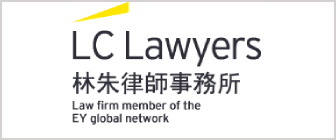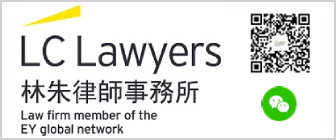Li Fai (Partner)
Email: fai.li@eylaw.com.hk
A revised listing regime for overseas issuers on the Stock Exchange of Hong Kong (SEHK) took effect following consultation on 1 January 2022. Major changes under the revised Rules Governing the Listing of Securities for overseas issuers are:
- One common set of core shareholder protection standards for all issuers;
- Consolidation of secondary listing requirements in revised chapter 19C, with relaxed qualification requirements for an overseas issuer primary listed on a Qualifying Exchange such as NYSE, Nasdaq or LSE, with a centre of gravity in Greater China without a weighted voting rights (WVR) structure; and
- Eligibility for dual primary listing by Grandfathered Greater China Issuers and Non-Greater China Issuers with non-compliant WVR and/or variable interest entity (VIE) structures. (Note: A Grandfathered Greater China Issuer is (1) primary listed on a qualifying exchange on or before 15 December 2017; or (2) primary listed on a qualifying exchange after 15 December 2017, but on or before 30 October 2020, and controlled by corporate WVR beneficiaries as at 30 October 2020.)
Protection standard revisions
Previously, non-Hong Kong issuers had to demonstrate that their shareholders were afforded shareholder protection at least “equivalent” to Hong Kong’s equivalence requirement.
To comply, listing applicants were either companies incorporated in recognised jurisdictions (namely Cayman Islands, Bermuda, mainland China and Hong Kong) or companies incorporated in acceptable jurisdictions that the SEHK accepted as place of incorporation eligible for listing in Hong Kong.
Under the new regime, the equivalence requirement and distinction between recognised jurisdictions and acceptable jurisdictions are removed.
Now a baseline level of shareholder protection requirements (core standards) set out in appendix 3 of the new Listing Rules is adopted for all issuers to ensure the same level of protection to all investors.
The core standards concern different aspects regarding, among others, directors, proceedings at general meetings, variation of rights, amendment of constitutional documents, appointment, removal and remuneration of auditors, proxies and corporate representatives, inspection of branch register, and voluntary winding up.
Shareholder protection requirements under the core standards should be set out in the issuer’s constitutional documents – unless the stock exchange is satisfied that the domestic laws, rules and regulations to which the issuer is subject provide for the same protection.
Existing listed issuers are required to ensure they fully comply with the new core standards – otherwise they need to make any necessary amendments to their constitutional documents to conform by their second annual general meeting following 1 January 2022.
Secondary listing requirements
To provide clearer guidance and reduce complexity, all relevant provisions in relation to secondary listing are now consolidated in revised chapter 19C of the Listing Rules. Set out below is a summary of the qualification requirements.
For overseas issuers with WVR:
- Track record of good regulatory compliance of at least two full financial years on a qualifying exchange; and
- Market capitalisation of at least HKD40 billion (USD5.09 billion); or market capitalisation of at least HKD10 billion and revenue of at least HKD1 billion.
For overseas issuers without WVR:
Criteria A
- Track record of good regulatory compliance of at least five full financial years on a qualifying exchange (or other recognised exchange, but for non-Greater China Issuers only); and
- Market capitalisation of at least HKD3 billion.
Criteria B
- Track record of good regulatory compliance of at least two full financial years on a qualifying exchange; and
- Market capitalisation of at least HKD10 billion.
A waiver of the listing track record criteria may be granted if the applicant seeking a secondary listing is well established and has a market capitalisation at listing significantly larger than HKD10 billion.
The stock exchange may reject a secondary listing application if a material part of the applicant’s business was listed on the primary listing market by way of a reverse takeover.
Compared to previously, secondary listing requirements for Greater China issuers without WVR structures have been relaxed under the new arrangement in two respects:
- Removing the “innovative company” requirement; and
- Lowering the market capitalisation requirement.
Before the amendments, Grandfathered Greater China Issuers and Non-Greater China Issuers with non-compliant WVR and/or VIE structures could only apply for secondary listing in Hong Kong.
Under the new arrangements, these categories are permitted to directly seek dual primary listing without amending their existing WVR or VIE structures – even though structures do not meet relevant listing requirements applicable to primary listing applicants – provided they meet current suitability and eligibility requirements of chapter 19C of the Listing Rules.
First published in April issue 2022 of China Business Law Journal.



